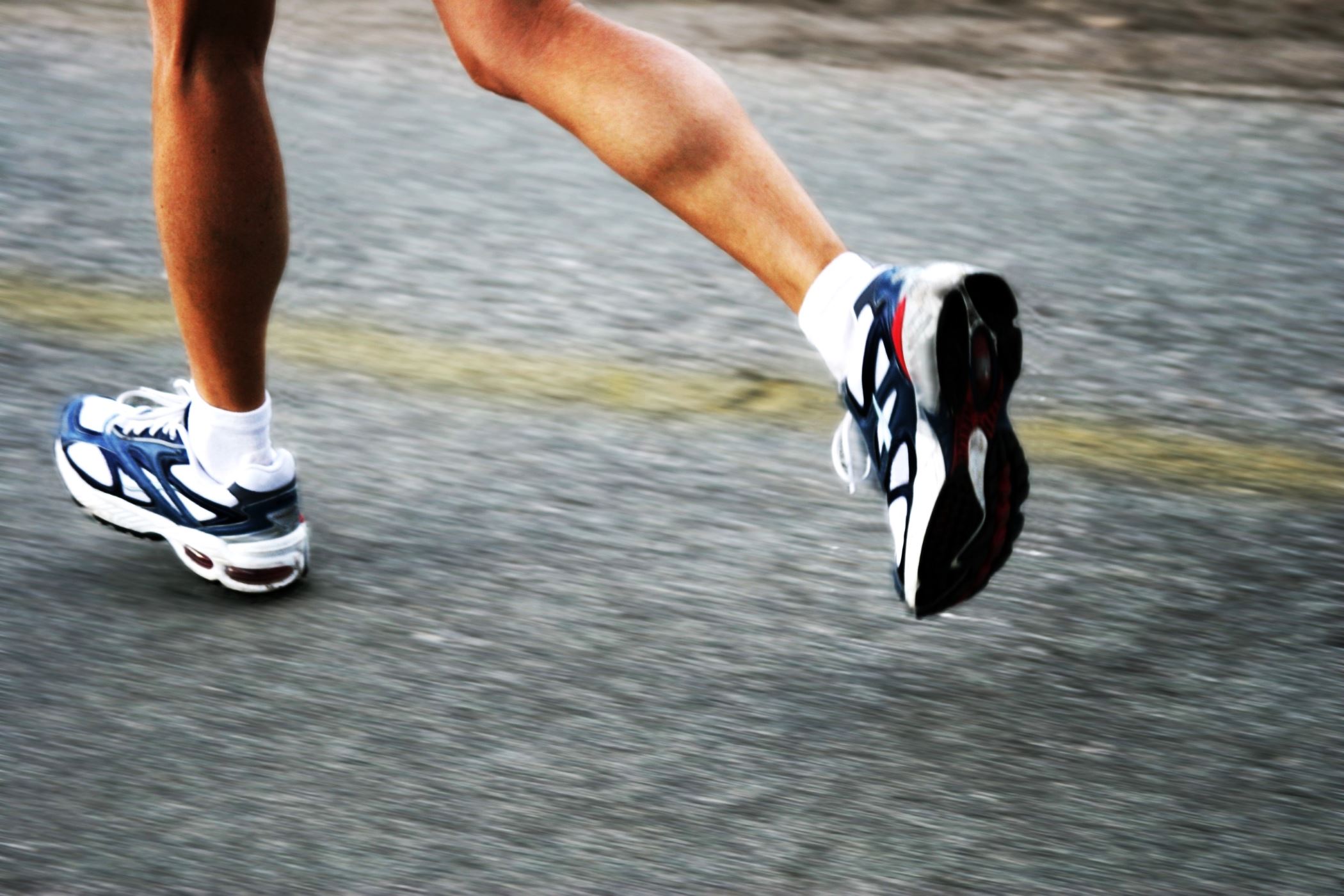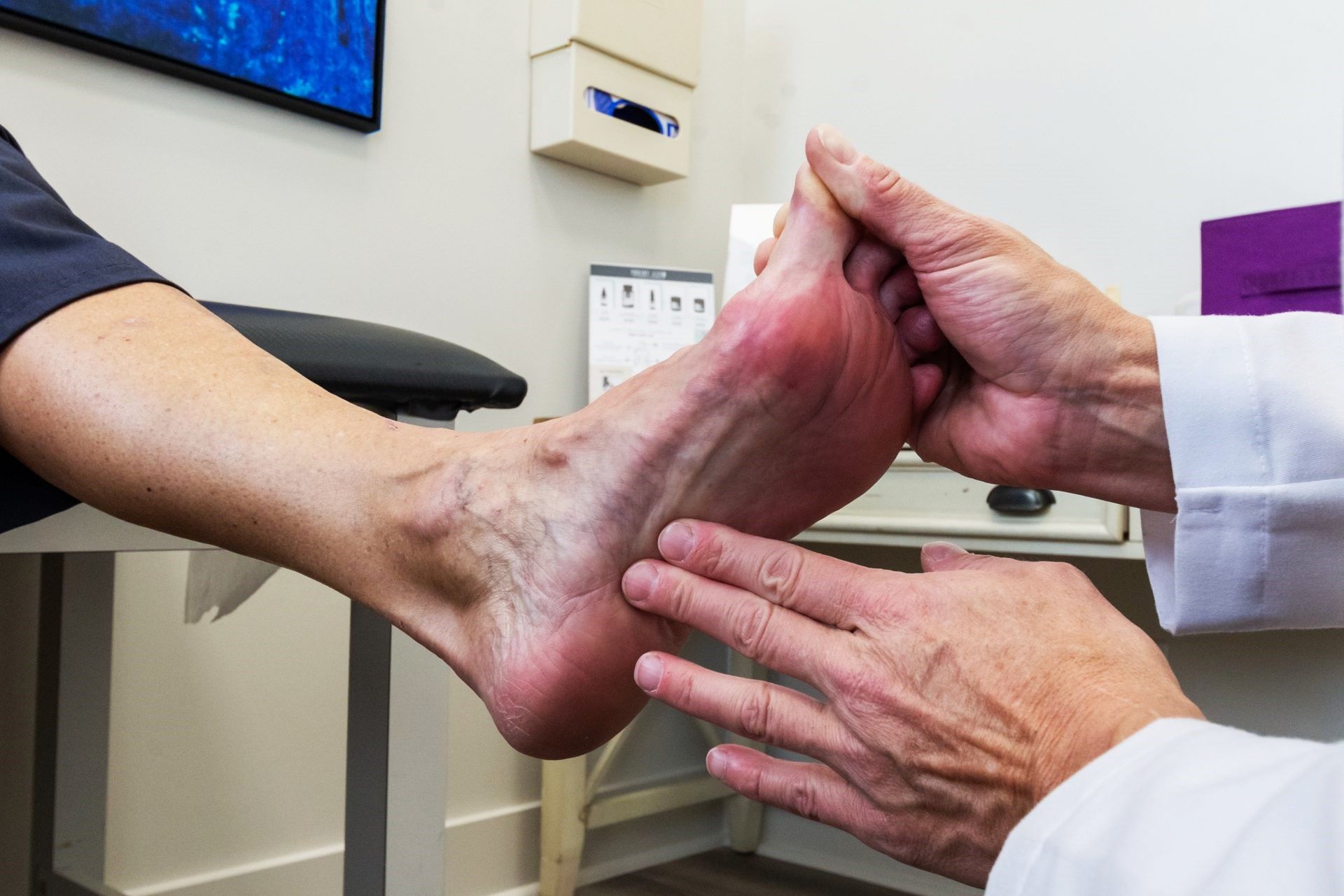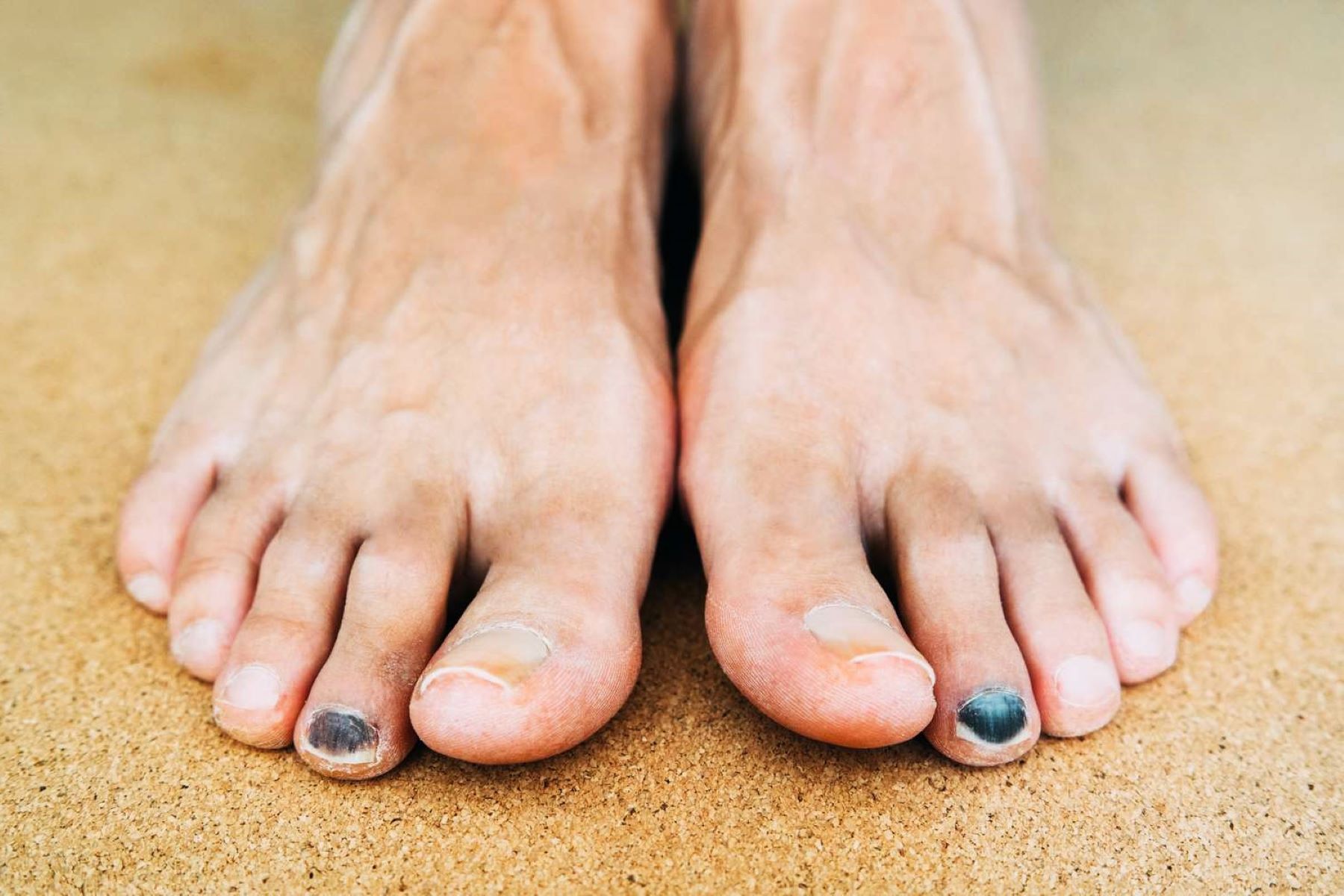Home>Health & Nutrition>Injury Prevention>Overcoming The 4 Most Common Running Injuries


Injury Prevention
Overcoming The 4 Most Common Running Injuries
Published: March 1, 2024
Learn how to prevent the 4 most common running injuries and keep your training on track. Expert tips and advice for injury prevention.
(Many of the links in this article redirect to a specific reviewed product. Your purchase of these products through affiliate links helps to generate commission for Therunningadvisor.com, at no extra cost. Learn more)
Table of Contents
Introduction
Running is a popular form of exercise that offers numerous health benefits, including improved cardiovascular fitness, weight management, and stress reduction. However, despite its many advantages, running also poses the risk of injury. Whether you're a seasoned marathon runner or a casual jogger, the potential for experiencing running-related injuries is a reality that cannot be overlooked.
In this article, we will delve into the world of running injuries, exploring the most common types, their causes, and effective strategies for prevention and treatment. By gaining a deeper understanding of these injuries and learning how to mitigate their risk, runners can continue to enjoy the physical and mental benefits of their chosen activity while minimizing the potential for setbacks.
Running injuries can be a source of frustration and disappointment, often leading to interruptions in training schedules and a decline in overall performance. Understanding the factors that contribute to these injuries is crucial for developing effective prevention and treatment plans. By addressing these issues head-on, runners can proactively safeguard their well-being and maintain their passion for running.
Throughout this article, we will provide valuable insights into the causes of common running injuries, practical tips for injury prevention, and the latest treatment options. Whether you're a novice runner aiming to complete your first 5K or a seasoned athlete preparing for a marathon, the information presented here will empower you to overcome the challenges posed by running-related injuries and continue pursuing your fitness goals with confidence.
Understanding the Causes of Running Injuries
Running injuries can stem from a variety of factors, encompassing both intrinsic and extrinsic elements that impact the body during physical activity. Understanding the root causes of these injuries is essential for implementing effective preventive measures and optimizing treatment strategies. Let's explore the primary contributors to common running injuries:
-
Biomechanical Factors: The biomechanics of running play a pivotal role in injury development. Issues such as overpronation (excessive inward rolling of the foot), supination (outward rolling of the foot), and improper gait mechanics can lead to increased stress on the muscles, tendons, and ligaments, predisposing runners to injuries such as plantar fasciitis, shin splints, and IT band syndrome.
-
Training Errors: Overtraining, sudden increases in mileage or intensity, inadequate rest periods, and improper training techniques can all contribute to the onset of running injuries. Pushing the body beyond its limits without allowing for sufficient recovery can lead to overuse injuries, stress fractures, and muscle strains.
-
Footwear Selection: Ill-fitting or worn-out running shoes can significantly impact the body's biomechanics, leading to an increased risk of injury. Inadequate cushioning, lack of arch support, or improper shoe sizing can exacerbate the impact forces on the feet and lower limbs, potentially resulting in conditions such as Achilles tendonitis, metatarsalgia, and blisters.
-
Muscle Imbalances: Weakness or tightness in specific muscle groups can disrupt the body's natural kinetic chain, leading to altered movement patterns and increased susceptibility to injury. Imbalances in the quadriceps, hamstrings, calves, and hip abductors can contribute to issues such as patellofemoral pain syndrome, hamstring strains, and iliotibial band friction syndrome.
-
Environmental Factors: Running on uneven or unstable surfaces, such as trails, uneven pavements, or slippery terrains, can challenge the body's stability and increase the risk of falls and traumatic injuries. Additionally, extreme weather conditions, such as excessive heat or cold, can impact the body's ability to regulate temperature and may contribute to heat-related illnesses or hypothermia.
By recognizing these underlying causes of running injuries, runners can take proactive steps to mitigate their impact. Through a combination of proper training techniques, biomechanical assessments, footwear selection, strength and flexibility training, and environmental awareness, individuals can minimize the risk of sustaining running-related injuries and continue to pursue their fitness endeavors with confidence and resilience.
Prevention Strategies for Running Injuries
Preventing running injuries is a proactive endeavor that involves a multifaceted approach encompassing proper training, biomechanical awareness, and lifestyle adjustments. By implementing the following strategies, runners can significantly reduce the likelihood of experiencing common running-related injuries and sustain their passion for this invigorating form of exercise.
-
Gradual Progression: Avoid the temptation to increase mileage or intensity too rapidly. Gradual progression allows the body to adapt to the demands of running, reducing the risk of overuse injuries such as stress fractures, tendonitis, and muscle strains.
-
Proper Footwear: Invest in high-quality running shoes that provide adequate cushioning, arch support, and stability. Regularly assess the condition of your shoes and replace them as needed to ensure optimal shock absorption and biomechanical alignment.
-
Biomechanical Assessment: Seek professional guidance to assess your running gait and biomechanics. Addressing issues such as overpronation, supination, or gait abnormalities through orthotics, corrective exercises, or footwear modifications can mitigate the risk of injuries such as plantar fasciitis, shin splints, and IT band syndrome.
-
Strength and Flexibility Training: Incorporate regular strength and flexibility exercises into your training regimen to enhance muscular balance and joint stability. Target key muscle groups such as the quadriceps, hamstrings, calves, and hip abductors to minimize the risk of imbalances and associated injuries.
-
Cross-Training: Engage in cross-training activities such as swimming, cycling, or yoga to diversify your exercise routine and reduce the repetitive impact on your musculoskeletal system. Cross-training helps prevent overuse injuries while promoting overall fitness and recovery.
-
Rest and Recovery: Prioritize adequate rest periods between training sessions to allow for physiological adaptation and tissue repair. Incorporate rest days into your weekly schedule and listen to your body's signals to avoid pushing through fatigue or pain.
-
Nutrition and Hydration: Maintain a balanced diet rich in essential nutrients to support muscle recovery and overall health. Hydration is also crucial for optimizing performance and reducing the risk of heat-related illnesses, particularly during hot weather conditions.
-
Environmental Awareness: Be mindful of your running environment, choosing safe and well-maintained routes to minimize the risk of falls and traumatic injuries. Additionally, adapt your running attire and hydration strategies to accommodate varying weather conditions and environmental stressors.
By integrating these preventive strategies into your running routine, you can proactively safeguard your physical well-being and minimize the potential for running-related injuries. Embracing a holistic approach to injury prevention empowers runners to pursue their fitness goals with confidence, resilience, and a reduced risk of setbacks.
Treatment Options for Common Running Injuries
When faced with common running injuries, prompt and effective treatment is essential to facilitate recovery and minimize the impact on training schedules and overall well-being. The following treatment options are tailored to address prevalent running-related injuries, offering runners the guidance and support needed to overcome these challenges and return to their passion for running.
Rest and Activity Modification
For acute running injuries such as muscle strains, ligament sprains, or stress fractures, immediate rest and activity modification are paramount. By reducing weight-bearing activities and avoiding exacerbating movements, the body can initiate the healing process without undue stress. Engaging in low-impact exercises or cross-training activities that do not aggravate the injury can help maintain cardiovascular fitness while allowing the injured tissues to heal.
Read more: 4 Common Causes Of Knee Pain After Running
Physical Therapy and Rehabilitation
Seeking the expertise of a physical therapist can provide targeted rehabilitation strategies to address running injuries. Through tailored exercise programs, manual therapy, and modalities such as ultrasound or electrical stimulation, physical therapists can facilitate tissue healing, restore mobility, and improve strength and flexibility in the affected areas. Additionally, gait analysis and biomechanical assessments can identify underlying issues contributing to the injury, guiding the development of personalized treatment plans.
RICE Protocol
The RICE protocol – Rest, Ice, Compression, and Elevation – serves as a foundational approach for managing acute running injuries. Resting the injured area, applying ice to reduce inflammation, utilizing compression to support the injured tissues, and elevating the affected limb can collectively alleviate pain and swelling while promoting the healing process. Adhering to the RICE protocol in the early stages of injury can significantly mitigate its impact and expedite recovery.
Pharmacological Interventions
In cases of persistent pain and inflammation, nonsteroidal anti-inflammatory drugs (NSAIDs) may be recommended to alleviate discomfort and reduce swelling. However, it is crucial to consult a healthcare professional before initiating any pharmacological interventions to ensure their appropriateness and minimize potential side effects. Additionally, corticosteroid injections may be considered for specific conditions such as bursitis or tendonitis under the guidance of a medical provider.
Orthotic Support and Footwear Modifications
Addressing biomechanical issues through orthotic support or footwear modifications can play a pivotal role in managing and preventing running injuries. Custom orthotics, supportive insoles, or specialized footwear designed to accommodate specific foot mechanics can optimize biomechanical alignment, reduce excessive stress on tissues, and mitigate the risk of recurrent injuries.
Surgical Intervention
In cases of severe running injuries such as advanced stress fractures, ligament tears, or persistent tendon damage, surgical intervention may be warranted. Orthopedic surgeons can assess the extent of the injury and recommend surgical options aimed at restoring structural integrity and function. Post-surgical rehabilitation and gradual return to running activities are crucial components of the recovery process.
By embracing a comprehensive approach to treatment, incorporating rest, rehabilitation, biomechanical interventions, and, when necessary, medical or surgical interventions, runners can effectively navigate the challenges posed by common running injuries. It is essential to prioritize early intervention, seek professional guidance, and adhere to personalized treatment plans to facilitate optimal recovery and minimize the risk of recurrent injuries.














